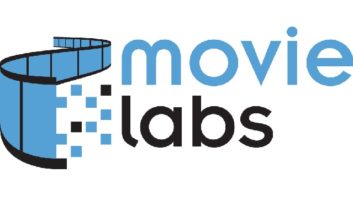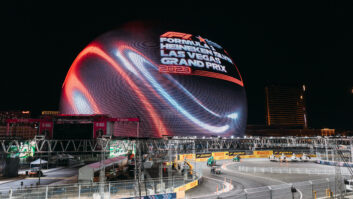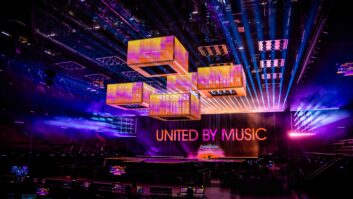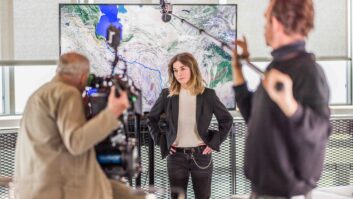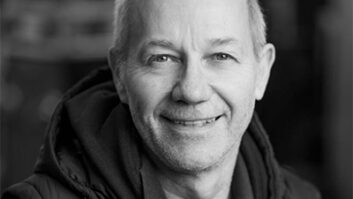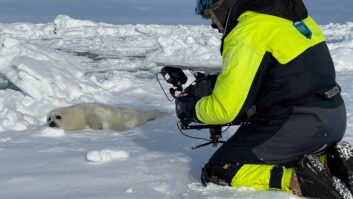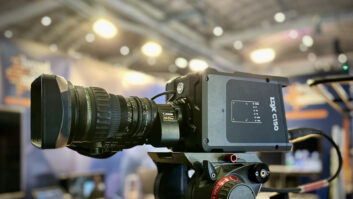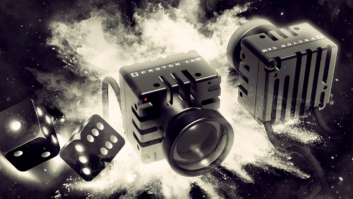UKTV’s first ever scripted drama series Flack stars Anna Paquin as an American PR executive living in London. The director of photography Ruairi O’Brien discusses the show’s lighting and photography.

How do you use light to bring the viewer into Flack’s world?
The lighting in Flack is mostly natural looking with some heightened moments. We didn’t want the lighting to feel flashy or self-conscious. The idea was to produce good-looking frames but with the attention on the characters and not the pictures. In my initial conversation with Anna Paquin, she said she was not precious about having to be lit flatteringly in every scene which was great. If her character was supposed to look hungover or tired she was entirely happy to go with that.
There are one or two heightened moments in the show including a scene where a night club makes a surreal change into another location. We managed to do that by using a lighting transition and it was incredibly exciting to shoot. We weren’t 100 per cent sure the effect would work until we shot it and the adrenaline buzz after pulling it off was hugely rewarding.
Is there a big difference in the way you light drama and non-drama?
I think every project has its own style. It’s not about whether it’s a drama or not, it is more an expression of mood and energy. Obviously, budget helps you achieve those things, but even on the smallest shoots, you still strive to create a visual mood.
This is dark funny drama as opposed to a comedy. I think it’s a new breed of show that fits in with things like Killing Eve and Flowers. So as a hybrid you need to be conscious of both ways of working – often comedy is about clearly landing a moment and being able to see both the action and the reaction in the same frame. In drama you often want to create tension and to be able to use cuts to do that. Ultimately we always shot in a more dramatic way but there were moments when you needed to have your comic antenna tuned too.
What cameras were used?
We shot on the Alexa Mini. Since I first put my hands on it in 2016 it has been the camera of choice for me. It’s not a technical thing, I just like the pictures and the simplicity of it. Cameras were supplied by 24/7 Drama. I can’t speak highly enough about how much they supported us.
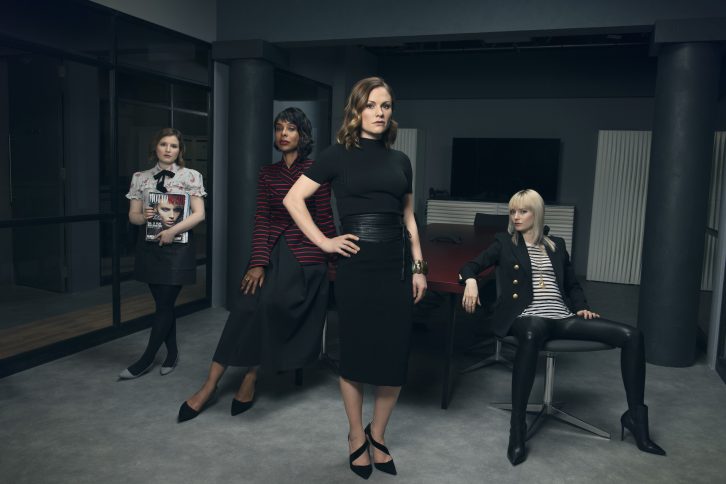
Did you used any special lenses and grading processes?
When I first sat down with Peter (Cattaneo, the director of block one) and the producers, I suggested shooting wide screen with Zeiss anamorphic lenses. I wasn’t sure they’d go for it, but they jumped straight on board. For years, broadcasters have been asked to give more freedom in terms of formats and aspect ratios but they have always insisted on 16:9. It seems now with the explosion of really high-quality ambitious drama, they are far more open to these things.
Peter and I presented the idea to the UKTV and the show’s US broadcaster Pop, showing them examples, and they were very supportive.
In terms of grading we had a very tight schedule – just eight days. So special praise should go to colourist Will Coker who did a beautiful job, polishing the sometimes rough images.
How much natural light did you use?
I love to use whatever natural light is available and work with it. For day scenes I tend not to use lamps. If you just bounce light back it works consistently with the sun. If the level of sunlight dips or brightens, the level of reflected light does the same.
On interiors sometimes you can get away with it, but the truth is that it often takes a lot of work for something to look natural, because cameras just don’t see the way our eyes do.
Often I approach a scene with a grand plan and then need to whittle it back for cost reasons and as frustrating as this can be, it becomes a process of distillation. In many cases the best things are simple and by paring things back you can come to very elegant solutions.
To what degree does photography/lighting change across a series as the drama plays out?
Like most shows the cinematography is about a consistency of style. Obviously there are modulations within that, with different situations and moods. Probably the brightest scene in Flack is one of the first ones – the scene features some dark humour, but the aim was to make it look like a happy and inviting environment. You’ll have to watch the show to find out what happens.
However, I think you can become too self-conscious with photography and if you aren’t careful it can become over the top and the visual equivalent of typing angrily in all caps. So, a bit of restraint is no bad thing.
When I first met the producers, I had a series of visual ideas. But as we started to shoot some of them wound up not being practical. I think it’s great to have concepts but it’s also important to be able to throw them away. I’ve seen people sabotage their work by being too tied to their initial ideas.
That said the one thing I really wanted to do was finish the first episode looking right into Anna’s eyes. I wanted to say, ‘now you see what she’s really like.’ It’s a very simple shot against a plain wall but to me it was important and in some ways it’s my favourite shot.
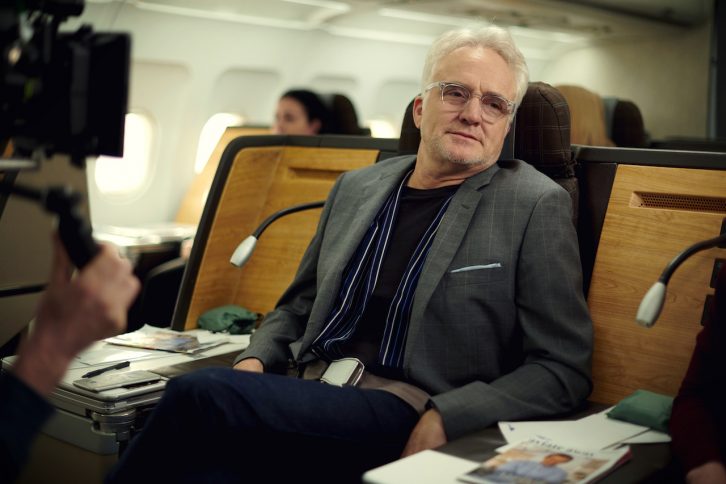
Were there different directors across the series and does this affect the lighting and photography in different episodes?
Director Peter Cattaneo brought me on board and then George Kane took over for the last three episodes. George was very keen to stick with the style that had been set up and so it was a very easy transition.
Anna was one of the executive producers and she really cared about the show and the crew – she created a very open and creative atmosphere. Anna and I fell into sync right away, which made the job much easier and more enjoyable. I think as a DoP you have a relationship with the cast and it’s important to establish trust. They are exposing themselves and they need to know you’re there to help them. Sometimes it’s just simple things like making sure an actress who’s been in heels all day has an applebox to sit on or getting a round of coffees in for everyone on cold days. It’s a team game and it’s important where possible to have cast and crew working as one. It’s terrible when the cast just keep to themselves.
Is there any difference in the way lighting is used in UK and US productions?
My understanding is that American shows tend to shoot over fewer days but they compensate with extra man power. There’s a real economy in having a large electrical team because lighting is what takes the most time. I wish we could have more electricians on European shows. It makes the whole process much more efficient.
Will you be back for series two?
We are waiting to see if there will be a series two – but I loved series one, so I’d be delighted.
Flack airs on W on Thursdays at 10pm from 21st February and is also available on UKTV Play.
